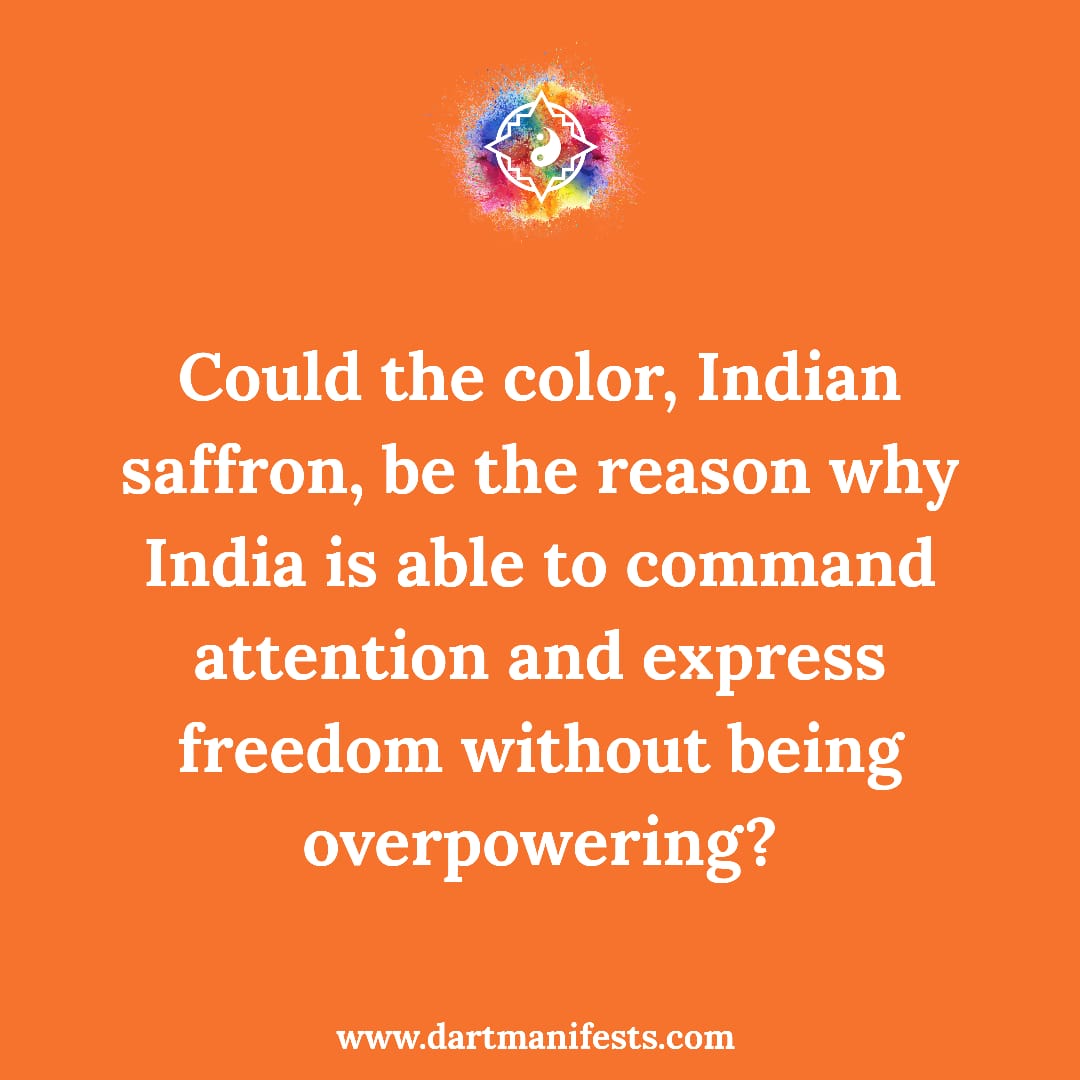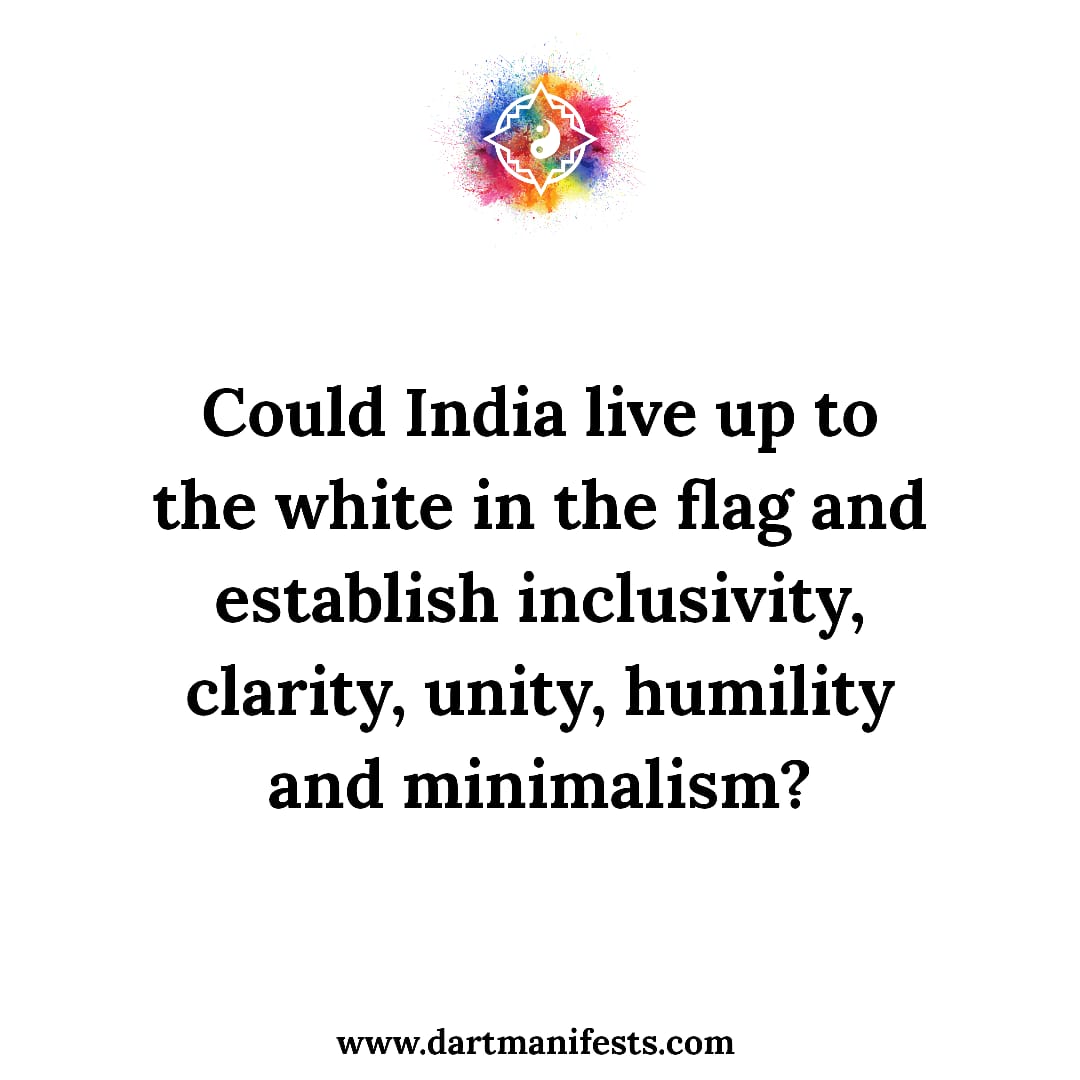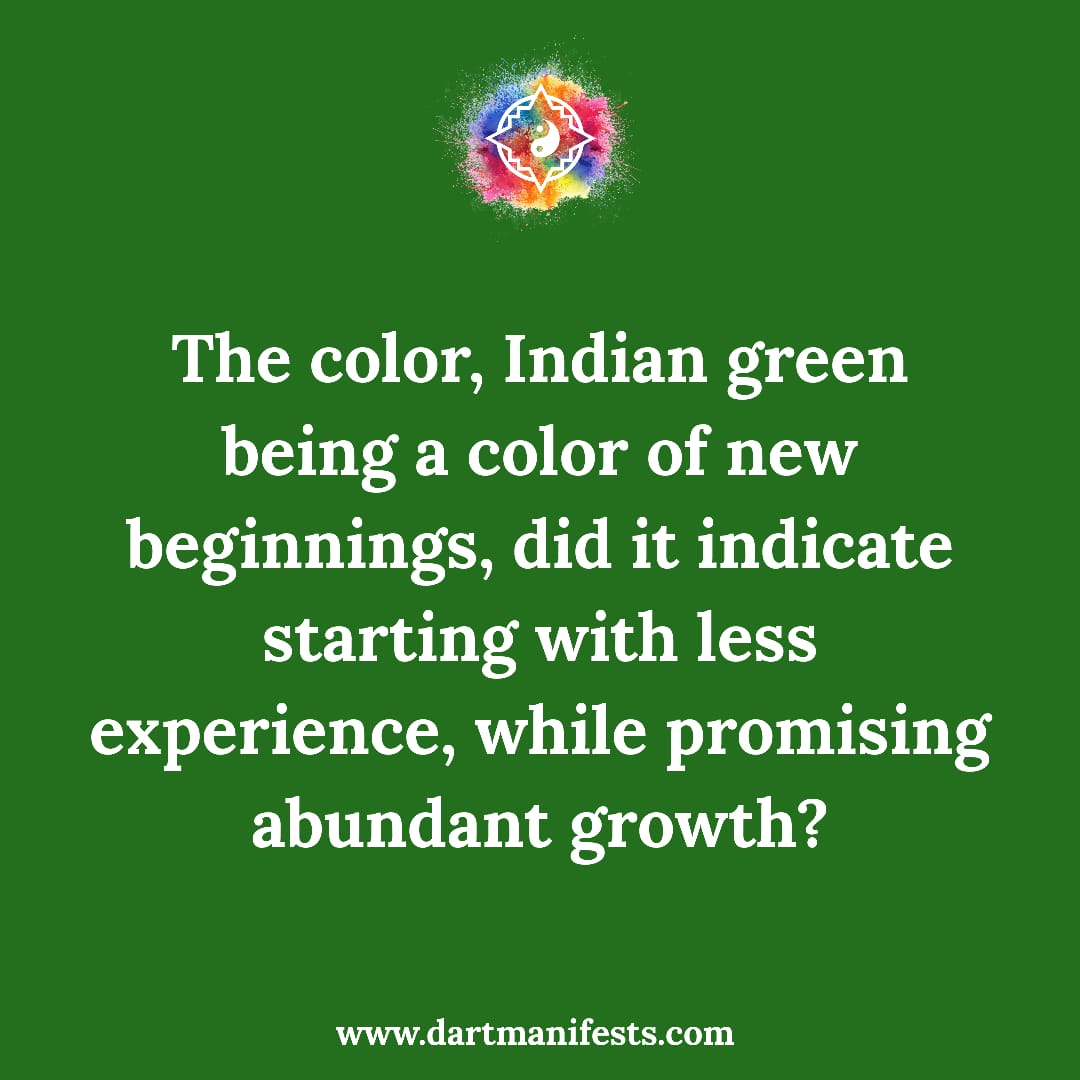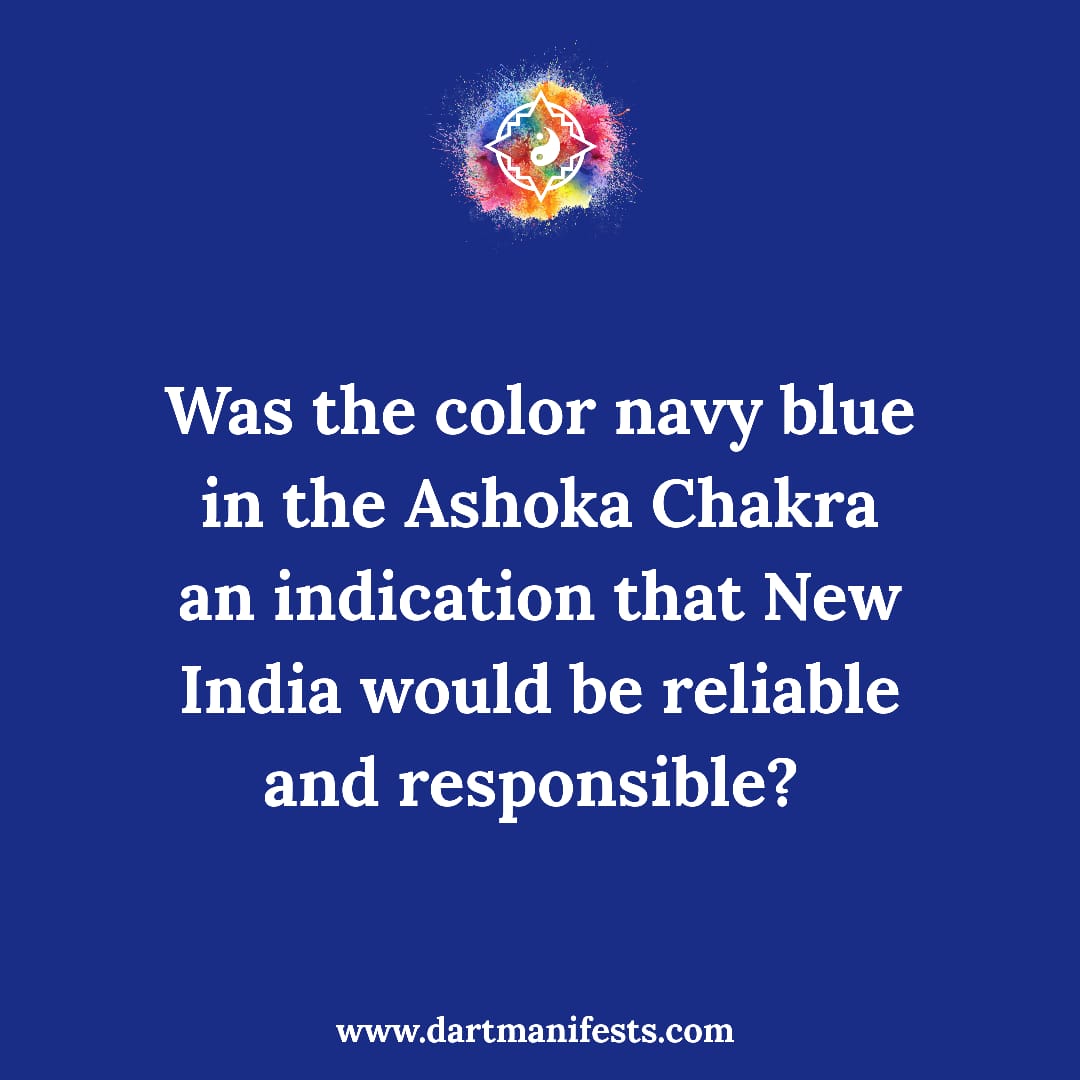Colors of the tricolor: could they have played a role in shaping and developing India? August 18, 2020 – Posted in: Colors
“Colors, like features, follow the changes of the emotions,” the artist Pablo Picasso once remarked.
Color is a powerful and effective medium of expression. Color is an effective communication tool and is known to signal action, influence mood, and even influence physiological reactions. Colors and emotions are closely linked. Warm colors can evoke different emotions than cool colors and bright colors can create different feelings than muted colors. It all depends on how the psychological effects of color are being used.
This concept of color therapy and color psychology is widely used in myriad of professions starting from interior designing to brand building to logo designing and mass influencing. For example, have you ever wondered why top food brands like McDonald’s, KFC, Domino’s Pizza, Burger King, etc use red and yellow color in their logo to represent them? It is because it revs up people’s appetites, making them hungry, which therefore makes them more likely to enter the store and buy more food while they are at the store. Such is the effect and influence that the colors can have on us.
When colors in logos can have such an effect on us, wouldn’t the specific colors in a national flag be even more powerful in influencing the citizens and in shaping the growth of the country and its culture?
Despite it being only a fabric, the national flag of every country stirs a multitude of emotions in its citizens. It is said that, the solider who falls defending his flag definitely does not believe that he has sacrificed his life for a piece of cloth! Every flag does quickly evoke feelings of pride and patriotism among the loyal citizens who stand beneath it. Flags work to unite us because through ritual use, they evoke a shared psychological state of solidarity. The overwhelming emotion that we feel on seeing our national flag suggests that the colors that the national flags display may tap into our psychological nature, particularly the psychology that we share derived from the heritage we share as a nation.
When the color and the design of our flag were customized, it was done in a way to be representative of the entire country and to resonate with the ideals that the country stood for.
As India celebrates its 74th Independence Day on the 15th August 2020, one might be interested to know that before the present tricolour national flag was finalized to represent free India, there were 5 other flags which were its predecessors, each depicting different colors and symbols and representing quite different things.
The present Indian national flag as we all know has 3 colors: deep saffron / Indian saffron (kesari) at the top, white in the middle and dark green / Indian green at the bottom in equal proportion.
So were these colors, which represented India from the year of its independence, instrumental in shaping the India as we know it today? What was the effect of these colors on the growth of the country in various spheres?
‘Patriotism builds in the heart
So many emotions they cast
Saffron, white and green
A lot do the colors mean.’
Lets have a look!

Indian saffron:
This is the color of new beginnings. The color which represents maturing, ripening and moving ahead. With the multitude of aspects in which the country was then developing and growing, it was the perfect color to assert our independence, strength, courage and power. It represented the creativity of the Indian citizens to take the reins of their country in their own hands and promise to steer it towards growth and development. It is noteworthy that this particular shade of color also represents someone (India in this case) who commands attention and expresses freedom without being too overpowering. Isn’t that typical of India? Indeed what better color than the Indian saffron could have been chosen to represent the rapidly developing and progressing India?

White:
India is a land of diversity. Hence the white color in the center of the Indian flag represents all inclusiveness, unity and peace. Is it any wonder then that India is the only country in the world where people belonging to many different religions and diverse cultures coexist and thrive hand in hand. The white color also represents tolerance, clarity, purity, cleanliness, virtue, humility and minimalism. These are the virtues displayed not only by the country at large but also its citizens in their daily lives. Hence even the modern western society and ideology have had much to learn from Indian culture and lifestyle of its citizens.

Indian green:
This is a color of new beginnings and it also signals renewal and growth. It signifies abundance and harmony. The new age India which has evolved after the Industrial revolution is correctly represented by this color. This particular shade also represents safety, stability, balance, dependability and prosperity. It also stands for beginning with a little experience yet promising significant growth. Wasn’t that the perfect way to represent India at the time of independence? In this new age economy, this color is ideal to represent the modern Indian growth which has its roots embedded in virtues like balance and dependability. Could this be the reason that the entire world is now looking at India as an emerging superpower?

The Navy blue
In the chakra stands for responsibility, reliability and calmness and was probably chosen as an assertion by New India to demonstrate that we are capable of taking this diverse country ahead despite it having been plundered for many years. The wheel seems to affirm this as it represents balance, being complete in itself, an impending change and moving ahead.
It would be interesting here to know that our great statesmen weren’t oblivious to the effects of color psychology. The notable philosopher Sarvepalli Radhakrishnan, who later became India’s first Vice President and second President, clarified the reason behind choosing the tricolor as the final Indian flag and described its significance as follows:
‘Bhagwa or the Saffron denotes renunciation or disinterestedness. Our leaders must be indifferent to material gains and dedicate themselves to their work. The white in the centre is light, the path of truth to guide our conduct. The green shows our relation to (the) soil, our relation to the plant life here, on which all other life depends. The “Ashoka Chakra” in the centre of the white is the wheel of the law of dharma. Truth or satya, dharma or virtue ought to be the controlling principle of those who work under this flag. Again, the wheel denotes motion. There is death in stagnation. There is life in movement. India should no more resist change, it must move and go forward. The wheel represents the dynamism of a peaceful change.’
What better colors could we have chosen to represent the modern day India? We can truly say and claim that the Indian flag, empowered by its colors, not only represents the heart of the country and its citizens but has also captured the true pulse of the rapidly growing, developing, progressing India, the true leader of the modern world!
